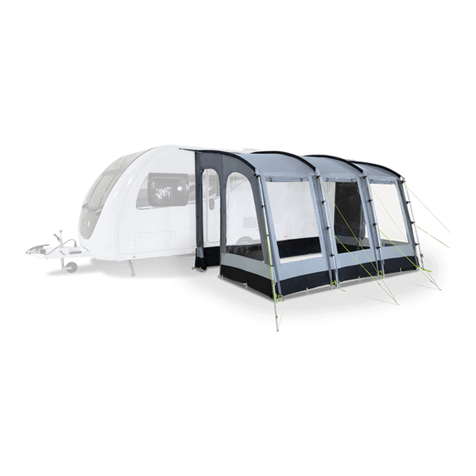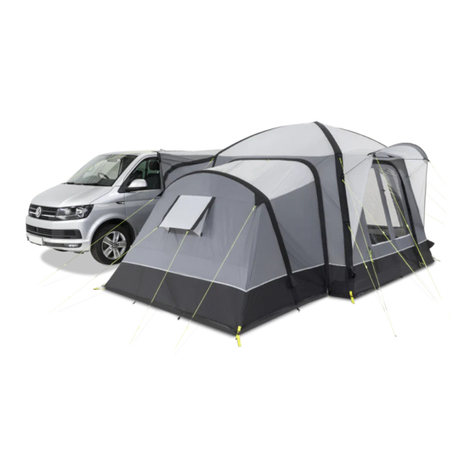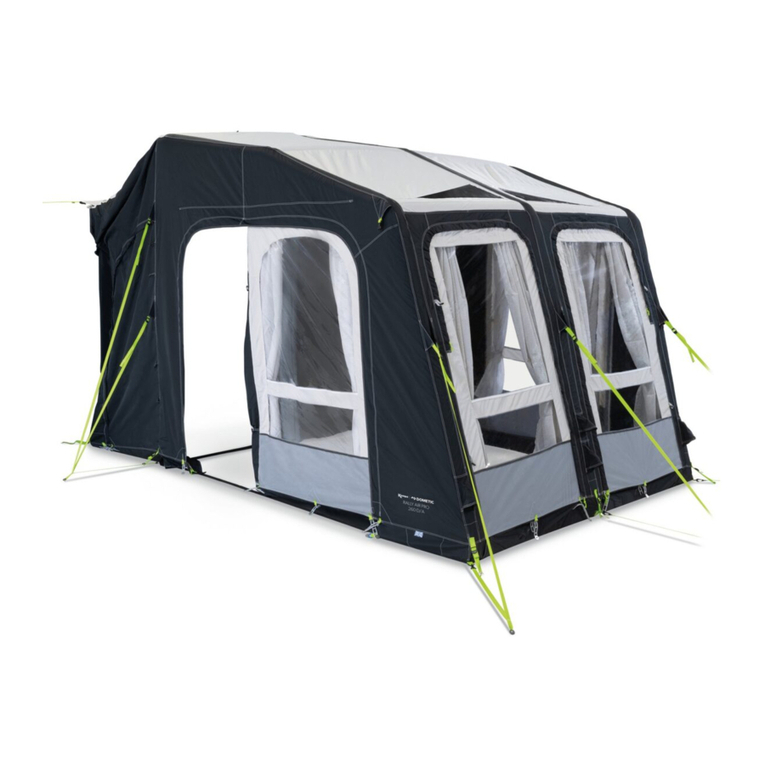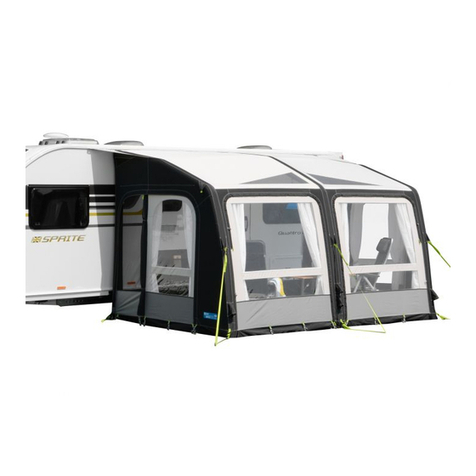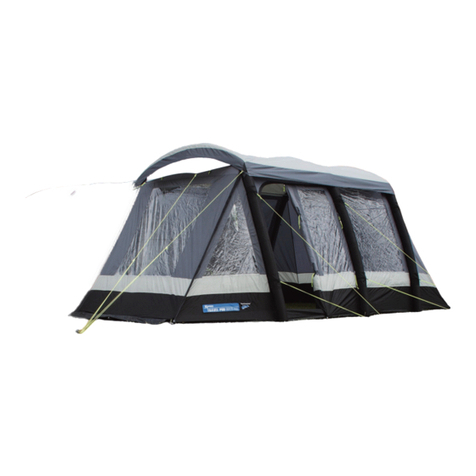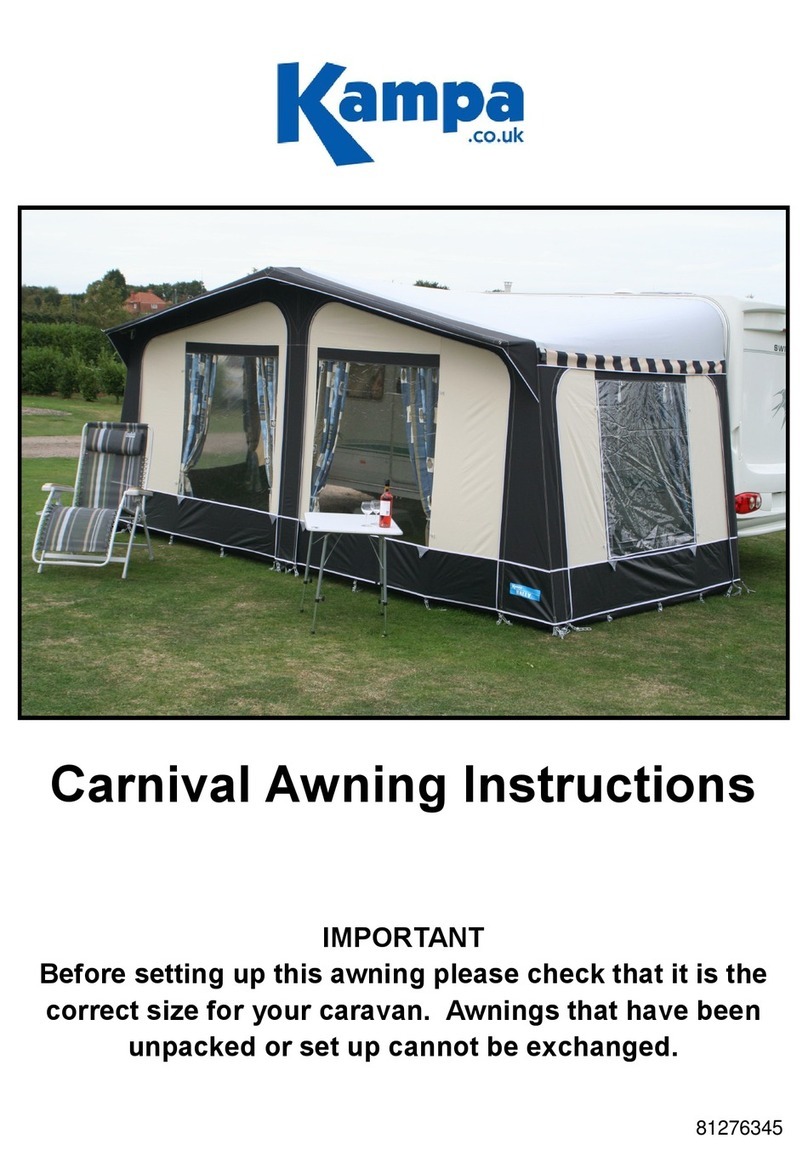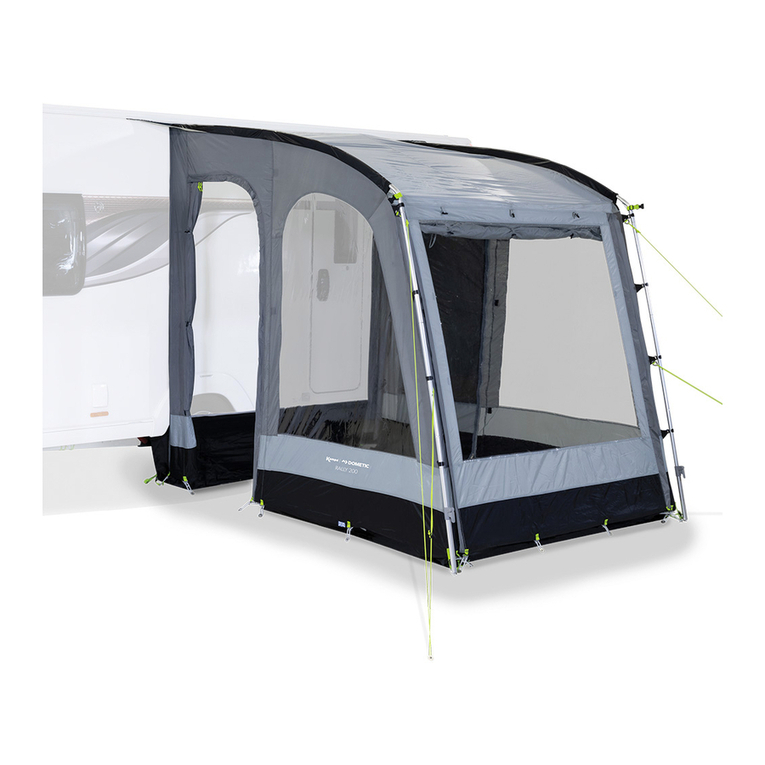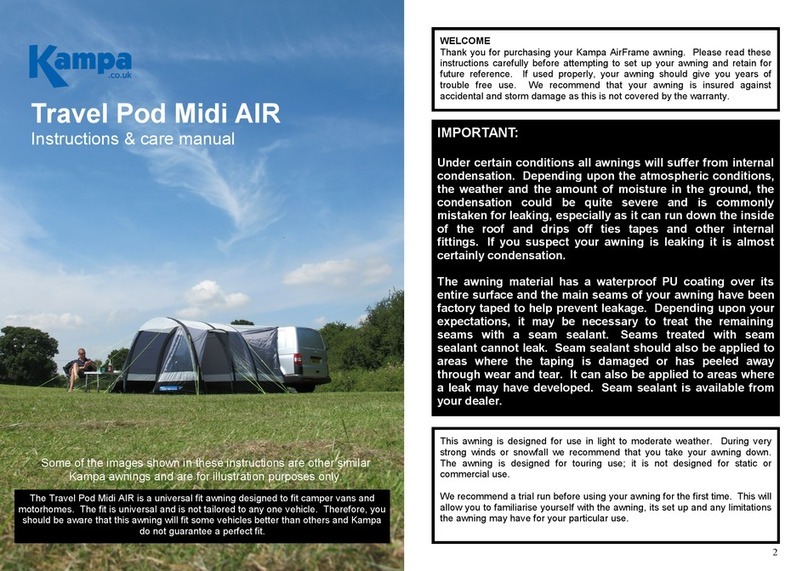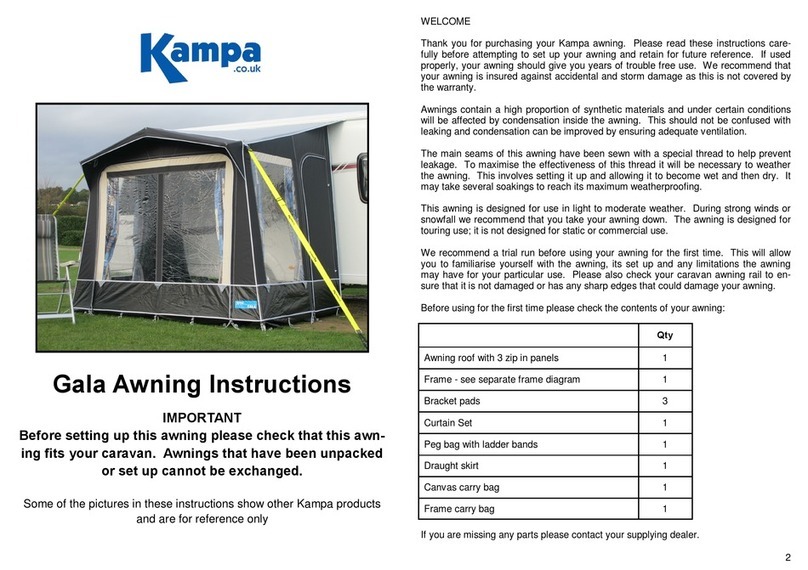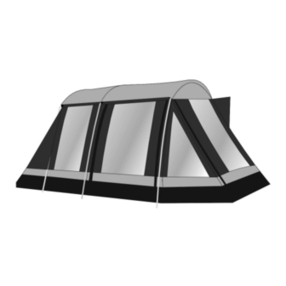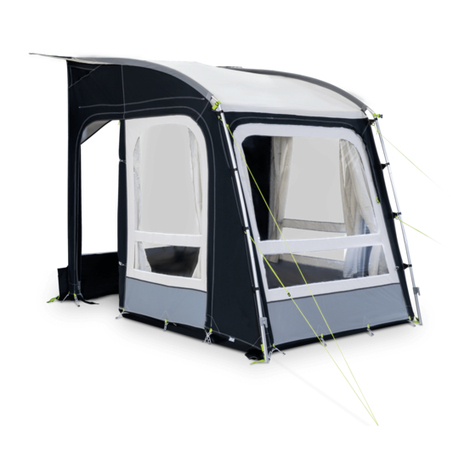
7
PEGS
The tent comes complete with general purpose pegs. These will be suitable for
many sites but there will be some instances where different pegs will be
necessary. Your dealer will stock a range of pegs suitable for different types of
ground. For maximum effectiveness, pegs should be driven into the ground at a
45 angle away from the pegging point.
RAIN
We make our tents as resistant to the weather as possible. Occasionally you may
find slight leakage. This is not a fault with the manufacturing process or materials
and can normally be rectified by spot treating the seam with seam sealant (see
below).
SEAMS
The main seams of this tent have been factory taped to help prevent leakage.
Depending upon your expectations, it may be necessary to treat the remaining
seams with a seam sealant. Seam sealant should also be applied to areas where
the taping is damaged or has peeled away through wear and tear. It can also be
applied to areas where a leak may have developed. Seam sealant is available
through your dealer.
SUITABILITY
This tent is designed for use in light to moderate weather. During very strong
winds or snowfall we recommend that you take your tent down. The tent is
designed for occasional use; it is not designed for static or commercial use.
UV DEGRADATION
Tent fabrics can be weakened by prolonged exposure to sunlight. Under normal
holiday use your tent will give long service but use for extended periods in strong
sunlight will soon cause deterioration. In those cases it would be wise to use a
site as shaded as possible. UV degradation is not covered under the warranty.
The warranty does not cover tents used on permanent sites, displays or for
commercial purposes.
CONDENSATION
Tents contain a high proportion of synthetic materials and under certain
conditions will be effected by condensation inside the tent. This should not be
confused with leaking. Condensation can be improved by ensuring adequate
ventilation. The tent comes with various ventilation ports that can be opened
and it may also help to keep a door open when the weather allows.
Condensation and its effects are not covered under the warranty.
SAFETY
DO NOT COOK IN THE TENT OR USE NAKED FLAMES. READ AND UNDERSTAND
THE FIRE PRECAUTIONS LABEL SEWN INTO THE INSIDE OF THE TENT.
